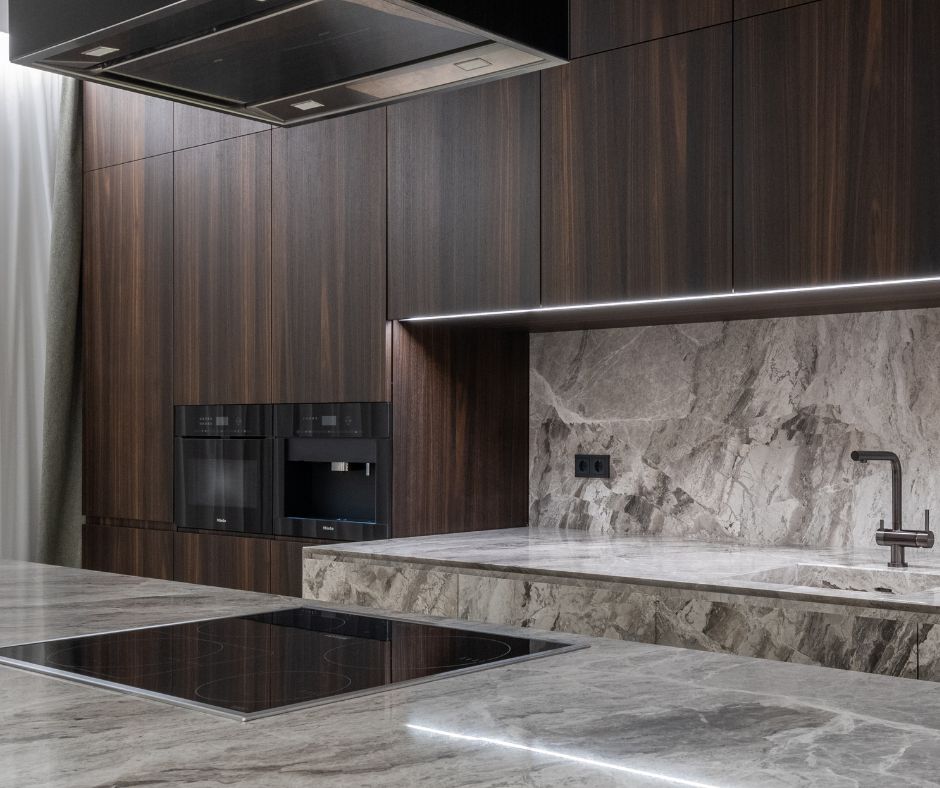Modern kitchens are at the forefront of culinary innovation, creating exciting new gastronomic traditions. Although induction cooking technology appears to be a contemporary breakthrough, its roots can be traced back to the early 20th century. Captivating demonstrations from the 1930s showcased the astonishing capability to boil water using magnetic energy without any visible heat source, leaving audiences in awe. However, it is only in more recent decades, driven by remarkable advancements in technology, efficiency, and design, that induction cooktops have firmly established themselves as essential components in today’s kitchens.
In today's culinary landscape, an ever-growing number of home chefs and food enthusiasts are embracing induction cooking for its impressive blend of sleek aesthetics, exceptional precision, and unmatched energy efficiency. This innovative cooking technique does more than just streamline meal preparation; it is transforming the essence of home cooking by combining the science of heat management with culinary creativity in every dish. The right induction cooktop can match the speed of a microwave in delivering delicious family meals!
Enhancing Food Quality and Nutritional Value with Precision Cooking Techniques
Unlike traditional gas or electric ranges, induction cooktops directly heat cookware using electromagnetic energy. This cutting-edge approach significantly reduces wasted heat, prevents burnt edges, and offers superior control over both low and high temperatures. With the ability to manage heat with such precision, your ingredients retain more of their natural moisture, flavour, and nutritional integrity. Whether you are flash-searing proteins, gently simmering sauces, or quickly blanching vegetables, induction cooking facilitates effortless achievement of perfect results, steering clear of overcooked meals and nutrient loss.
Contemporary Induction Cooktops: Maximising Space and Reducing Cooking Stress
In kitchens where every inch counts, induction cooktops shine not only in functionality but also in style. Their flat, smooth surfaces seamlessly blend into the countertop, offering a minimalist aesthetic that creates additional space for food preparation, plating, or even casual dining.
In contrast to traditional gas hobs, which feature bulky grates and protruding burners, induction cooktops sit flush with the countertop. While ceramic stovetops may appear sleeker, they tend to retain dangerous heat long after cooking has finished.
Conversely, induction surfaces cool down rapidly once the cookware is removed. The heat is generated through the magnetic interaction between the cooktop and the cookware rather than the cooktop itself, resulting in the glass surface retaining significantly less heat. This feature not only makes cleaning safer and easier but also creates a safer cooking environment, particularly beneficial for households with children or pets who might be inquisitive about kitchen counters.
The result is a cooler kitchen with cleaner lines and greater flexibility—ideal for contemporary cooks who value both aesthetic appeal and functionality.

Comprehensive Guide to Choosing the Best Cookware for Induction Cooking
Making the switch to induction cooking may come with a bittersweet revelation: you might need to part ways with some beloved old pots and pans. Since induction technology relies on magnetic energy for heat generation, not all cookware will be suitable for this cooking method.
For cookware to work effectively on an induction cooktop, it must be manufactured from ferrous (magnetic) metals, including cast iron, carbon steel, or magnetic-grade stainless steel. A quick fridge magnet test can determine compatibility: if a magnet adheres firmly to the bottom of the pan, you're in the clear.
When selecting new cookware, choose pans with a heavy, flat base. This design ensures optimal contact with the cooktop, delivering even heat distribution that is vital for achieving perfect browning, tender roasts, and crispy edges. Moreover, high-quality induction cookware is engineered to resist warping over time, ensuring consistent cooking performance for every meal.
Although it may be difficult to bid farewell to old favourites, consider this transition an upgrade. In exchange, you gain enhanced control, quicker cooking times, and dishes that showcase even richer flavours and textures.
Induction Cookware Essentials: Quick Checklist for Success
 Conduct a fridge magnet test—strong adhesion indicates induction compatibility
Conduct a fridge magnet test—strong adhesion indicates induction compatibility Opt for flat-bottom pans for optimal contact and heat distribution
Opt for flat-bottom pans for optimal contact and heat distribution Choose cast iron, carbon steel, or magnetic stainless steel cookware
Choose cast iron, carbon steel, or magnetic stainless steel cookware Avoid cookware made exclusively from copper, aluminium, or glass unless explicitly marked for induction
Avoid cookware made exclusively from copper, aluminium, or glass unless explicitly marked for induction Look for the induction symbol (which resembles a horizontal coil or a series of loops) stamped on the base or packaging
Look for the induction symbol (which resembles a horizontal coil or a series of loops) stamped on the base or packaging
Pro Tip: The induction symbol typically looks like a zigzag or spring coil graphic. Spotting it ensures cookware compatibility.
Essential Installation Considerations for Your Induction Cooktop
Before you embark on your culinary journey with your new cooktop, several installation essentials must be prioritised:
-
Professional Installation Is Essential: Induction units often require dedicated electrical circuits and specific clearances. Ensure you engage professionals who understand these requirements.
-
Engage a Qualified Electrician: Wiring a high-powered induction cooktop is not a DIY task.
Discover why hiring a qualified electrician is crucial. -
Verify Your Power Setup: Some induction models consume substantial power. Before making a purchase, confirm that your wiring meets the cooktop’s specifications.
Proper installation not only guarantees optimal performance but also ensures safety and longevity.
Key Insights on the Benefits of Induction Cooking
Induction cooking offers far more than mere speed or safety—it embodies intelligence. With the right cookware and a professionally installed system, you can consistently create better-tasting meals, achieve richer textures, and enjoy healthier options, meal after meal. In modern kitchens, precision cooking is not just a preference; it has evolved into the new standard.
Frequently Asked Questions Regarding Induction Cooktops
1. What Makes Induction Cooktops Superior Compared to Gas or Electric Alternatives?
Induction cooktops provide immediate heat control, improved energy efficiency, and enhanced safety features. As they heat the cookware directly, meals cook more quickly with less energy waste, while the surfaces remain cooler, thus minimising the risk of burns.
2. Can I Use My Existing Pots and Pans with an Induction Cooktop?
Only if they are magnetic. Cookware made from cast iron or magnetic stainless steel is ideal. You can easily check for compatibility by placing a magnet on the base—if it sticks firmly, it’s suitable for induction cooking.
3. Does Induction Cooking Affect the Flavour of Food?
Yes, and in a beneficial manner. Because induction cooking allows for precise temperature control, you can sear, sauté, or simmer without overheating, thereby preserving the natural flavours, textures, and nutrients more effectively than with inconsistent gas or electric heat.
4. Is Special Wiring Necessary for an Induction Cooktop?
Most induction cooktops require a dedicated electrical circuit along with specific voltage and amperage configurations. It is essential to have a professional electrician assess and install your wiring to ensure compliance with safety regulations and guarantee optimal performance.
The post The Secret Ingredient in Modern Kitchens: Induction Cooktops Are Changing the Game appeared first on https://cookinggods.com
The Article Induction Cooktops: The Game-Changer in Modern Kitchens Was Found On https://limitsofstrategy.com


Your exploration of induction cooking technology is truly fascinating, especially considering how it marries history with modern culinary practices. It’s remarkable to think that the concept of cooking with magnetic energy has been around since the early 20th century, yet it took decades for it to reach the kitchens of everyday home chefs. This slow evolution is a testament to how innovation can sometimes take time to resonate with the masses.
It’s interesting you bring up the timeline of induction cooking technology. It really does highlight that innovation often takes a backseat to consumer habits and preferences. Take, for example, the rise of the electric kettle. It existed for years before it became ubiquitous in kitchens, simply because it took time for people to recognize its utility compared to a traditional stove.